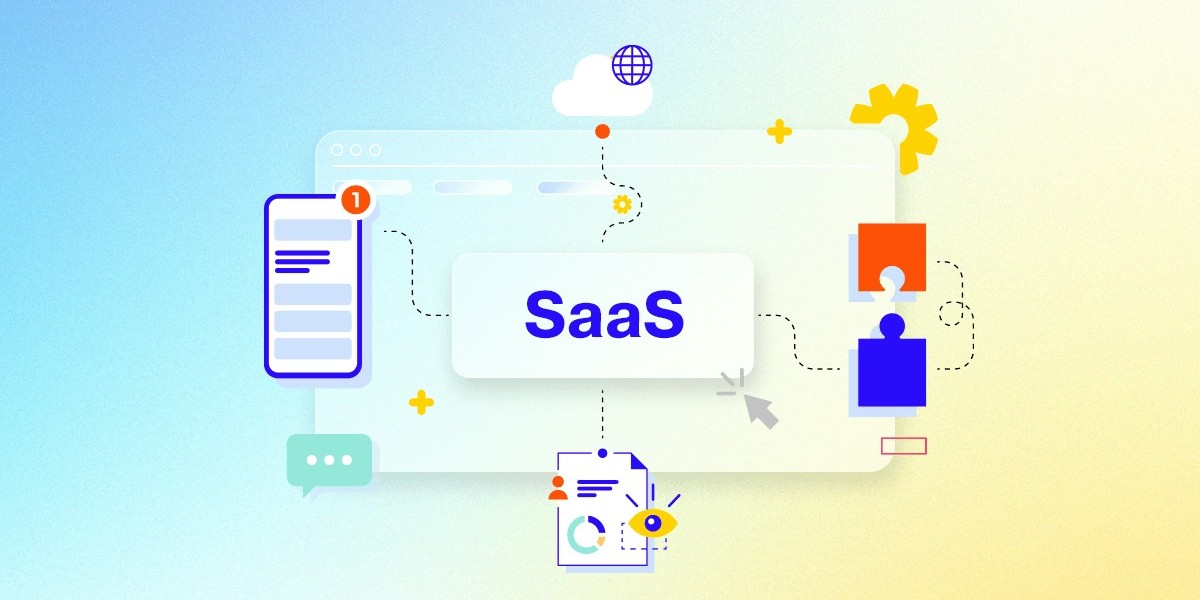Introduction to Software as a Service (SaaS)
Software as a Service (SaaS) is a cloud-based software delivery model that allows users to access applications via the internet rather than installing them on local devices. This model eliminates the need for complex installations, frequent maintenance, or hardware upgrades. Instead, SaaS providers host the software on their servers and offer access through subscription-based models. Commonly used applications such as email platforms, customer relationship management (CRM) systems, and collaboration tools fall under the SaaS category. This innovative approach to software distribution is reshaping the way businesses and individuals interact with technology.
Key Benefits of SaaS Solutions
One of the most attractive features of SaaS is its cost-effectiveness. Businesses can significantly reduce upfront software costs since SaaS usually operates on a pay-as-you-go model. There’s no need for expensive licensing or hardware investments. Another advantage is scalability. SaaS platforms can grow alongside a company’s needs, making it easy to add or remove users and features as necessary. Moreover, SaaS tools offer automatic updates and security patches, ensuring the software is always current without requiring user intervention. Accessibility is also enhanced, as users can connect to their SaaS applications from anywhere with an internet connection, enabling a more mobile and flexible workforce.
Common Applications of SaaS
SaaS applications are diverse and span across multiple industries. In business operations, tools like Slack, Microsoft 365, and Google Workspace streamline communication and productivity. For sales and customer service, platforms such as Salesforce and Zendesk provide cloud-based CRM and support solutions. In accounting, tools like QuickBooks Online and FreshBooks simplify financial management. Education has also embraced SaaS through learning management systems like Canvas and Google Classroom. These applications allow institutions and businesses to deliver services efficiently, manage users, and maintain a centralized system for data and collaboration without the burden of physical infrastructure.
The Architecture Behind SaaS Platforms
SaaS platforms are built on a multi-tenant architecture, where a single instance of the software serves multiple users or organizations. Each tenant's data is isolated and secure, while the application itself is shared to maximize efficiency. This structure reduces the need for individual software instances and simplifies maintenance. SaaS architecture also allows for continuous integration and delivery, enabling developers to roll out features and updates without disrupting user activity. Additionally, data storage and backup are managed in the cloud, offering redundancy and reducing the risk of data loss. This technical foundation supports the scalability and reliability that users expect from SaaS solutions.
Security and Privacy in SaaS
Security is a crucial concern when adopting any cloud-based service. SaaS providers invest heavily in cybersecurity measures to protect user data and maintain trust. This includes encryption of data in transit and at rest, multi-factor authentication, regular security audits, and compliance with data protection regulations such as GDPR and HIPAA. Unlike traditional software, SaaS platforms can deploy updates across all users simultaneously, which is particularly valuable for quickly addressing vulnerabilities. Furthermore, user access controls and role-based permissions add additional layers of security, ensuring sensitive information remains accessible only to authorized individuals within an organization.
Challenges and Considerations in SaaS Adoption
Despite its advantages, SaaS is not without its challenges. Dependence on internet connectivity can be a limiting factor, especially in regions with unreliable access. Subscription costs, while often lower upfront, can add up over time and may become costly if not managed properly. Data portability and integration with existing systems can also present hurdles during transition. Additionally, some organizations may have concerns about data sovereignty, especially when SaaS providers host data in foreign jurisdictions. Therefore, businesses must conduct thorough evaluations of SaaS providers, including service level agreements (SLAs), uptime guarantees, and customer support options, before adoption.
SaaS in the Remote Work Era
With the rise of remote work, SaaS has become more relevant than ever. Cloud-based collaboration tools, video conferencing platforms, and project management solutions have empowered distributed teams to maintain productivity and connectivity. SaaS platforms offer seamless access from various devices and locations, supporting hybrid and remote work models. Additionally, centralized cloud storage allows teams to collaborate on documents in real-time, track changes, and maintain version control. As businesses continue to adapt to flexible working environments, SaaS will play a pivotal role in supporting secure, agile, and efficient operations.
The Future of SaaS
The evolution of SaaS is far from over. Emerging technologies like artificial intelligence (AI), machine learning, and automation are being integrated into SaaS applications to enhance functionality and deliver smarter insights. Personalized experiences, predictive analytics, and adaptive user interfaces are becoming more common in modern SaaS solutions. Moreover, the trend toward industry-specific SaaS—tailored software for verticals such as healthcare, finance, and logistics—continues to grow. As more organizations embrace digital transformation, the demand for customizable, scalable, and secure cloud-based solutions is expected to rise, solidifying SaaS as a cornerstone of future business technology.
Read More - https://www.marketresearchfuture.com/reports/software-as-a-service-market-2003
Conclusion
Software as a Service has fundamentally changed how we think about and use software. Its combination of flexibility, affordability, and scalability makes it an ideal solution for businesses of all sizes and across all industries. From everyday productivity tools to advanced business applications, SaaS offers a streamlined and effective alternative to traditional software models. As technology continues to evolve, SaaS will remain at the forefront, enabling innovation and growth in a connected, cloud-first world.








